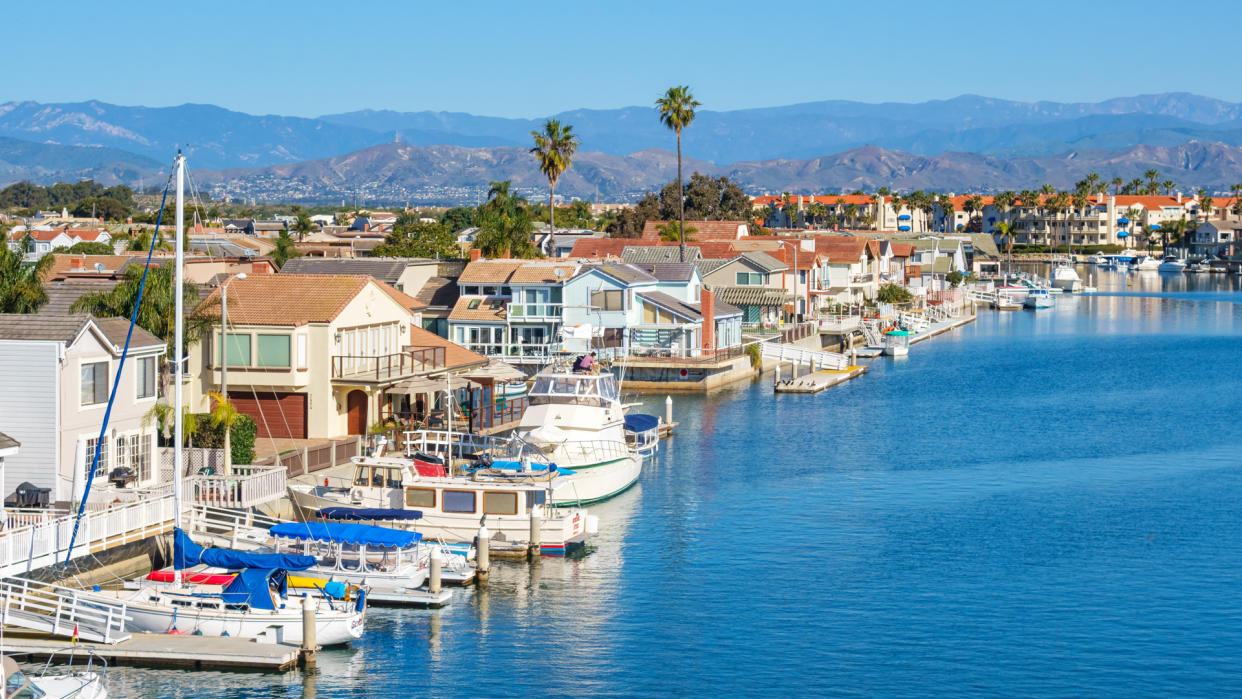Is Waterfront Property a Good Buy?

Waterfront property is generally considered to be some of the most desirable — and often carries a price tag to match. However, climate change is increasing the severity of hurricanes and leading to rising sea levels. But, like most things in life, the answer to whether waterfront property is a good buy is likely not a simple “yes” or “no.” There are many factors to consider.
Related: Homes in These 25 Waterfront Cities Are a Total Steal
Find Out: 8 Insider Tips To Get Rich in Real Estate
Traditionally, those who wanted to make their home and the beach one and the same wouldn’t think twice about scooping up an oceanfront property. But are these properties still a good buy, given the potential for increased levels of risk? How can you protect yourself from rising tides and worsening storms? We tapped some experts on the subject to help answer these questions.
Will My Property Be Underwater in the Future?
While rising sea levels are a very real threat, the reality here is likely more nuanced. Some areas will be impacted more greatly than others. Even along the coastline, the impacts will not be uniform. Sea-level rise is a very gradual process; it’s nothing like flipping a switch.
Glenn S. Phillips, CEO at Lake Homes Realty, spoke to the subtle and gradual changes due to climate change. He emphasized that waterfront homes will not be underwater in the near future.
“Rising ocean levels are not like Hollywood. This may be decades, or more, and will be very gradual. In addition, most modern homes built along the ocean are designed to better survive ocean surges from storms, particularly hurricanes. Buying oceanfront or lakefront homes now is a pretty safe bet, at least as far as water levels are concerned.”
Economy Explained: What Is Inflation and What Does It Mean When It Goes Up or Down?
Keep in mind that whether your property will be “underwater” is itself a complicated question. One reason is that there are still a lot of unknowns; we don’t know exactly how the future will play out. For example, GlobalClimateChange.gov projects 1.0-1.3 feet of sea-level rise by 2050 in Norfolk, Virginia, but that is only if ice sheets do not melt. If ice sheets melt, that projection increases to 2.0-2.3 feet by 2050.
To help you navigate the risks, Phillips also recommends working with a real estate agent who understands the nuances of oceanfront and lakefront property. “This can take an agent years to understand the special local regulations, differences in seasonal and daily water levels, the impact of boat traffic, the impact of nearby public access and a host of other issues. Even if you have a great friend who is a good agent, if they do not understand the waterfront market, you can accidentally make some big mistakes in your purchase.”
Read: In Less Than a Decade, You Won’t Be Able To Afford a Home in These Cities
Are Waterfront Properties a Good Buy?
Firstly, what is a “good” buy is different for everyone. For someone who doesn’t care for the water, a waterfront property would not be a good buy. But when considering the financial side, waterfront properties should still be a safe bet, at least in the near term.
“People who invest in oceanfront homes are pretty well protected in the near future,” said Phillips. “In the next years, any sea level increases will be minimal. To protect your investment, simply pay attention to the average sea level increase over several years and be prepared to sell well before anything dramatic.”
The key, then, is to keep an eye on the market. There are also a variety of ways you can find out how much sea levels have changed up to this point. NASA, for example, is monitoring sea-level rise.
How Can You Protect Yourself?
In addition to protecting your investment, you can also take some steps to make your home more sustainable. Billy Parish, founder and CEO of Mosaic, offered some sensible ways to improve your home.
“Climate change will impact all cities and all homes in the future. Every home will need to adopt smart and sustainable home solutions — like home solar, batteries, resilient roofing and electric heat pumps — both to mitigate climate change and to adapt to the more extreme weather events we are experiencing.”
See: 10 Hidden Costs of Buying a House
There are also new agencies appearing that can help inform buyers and investors of potential risks. Etienne Cadestin, founder and Global CEO at Longevity Partners, brought this to attention. “The task force for climate financial disclosure (TCFD) requires investors to understand the physical risks of climate change on investments and have a plan for mitigating that risk. Going forward, homebuilders in coastal communities will have more guidance from a risk perspective.”
More From GOBankingRates
Last updated: June 29, 2021
This article originally appeared on GOBankingRates.com: Is Waterfront Property a Good Buy?
